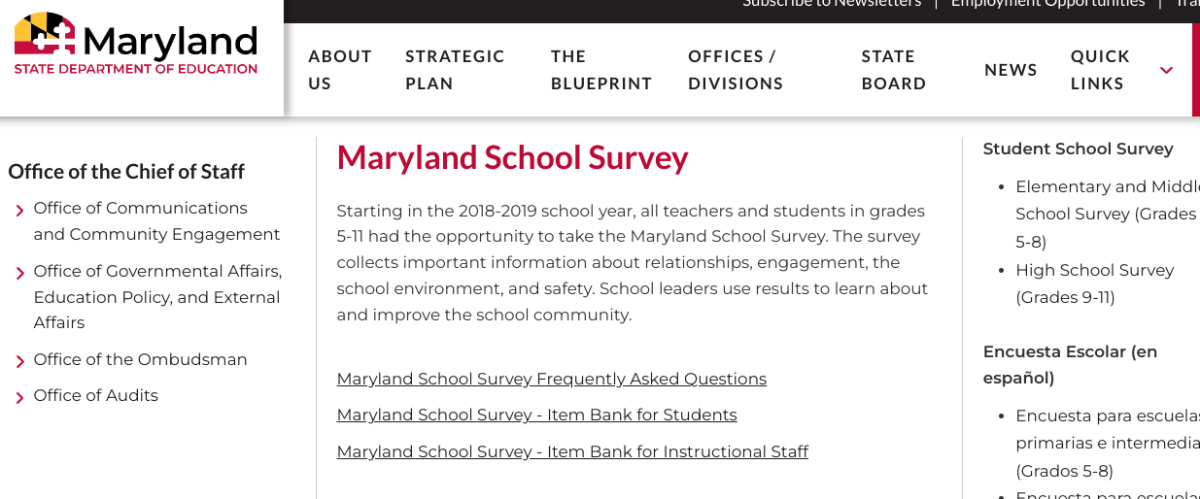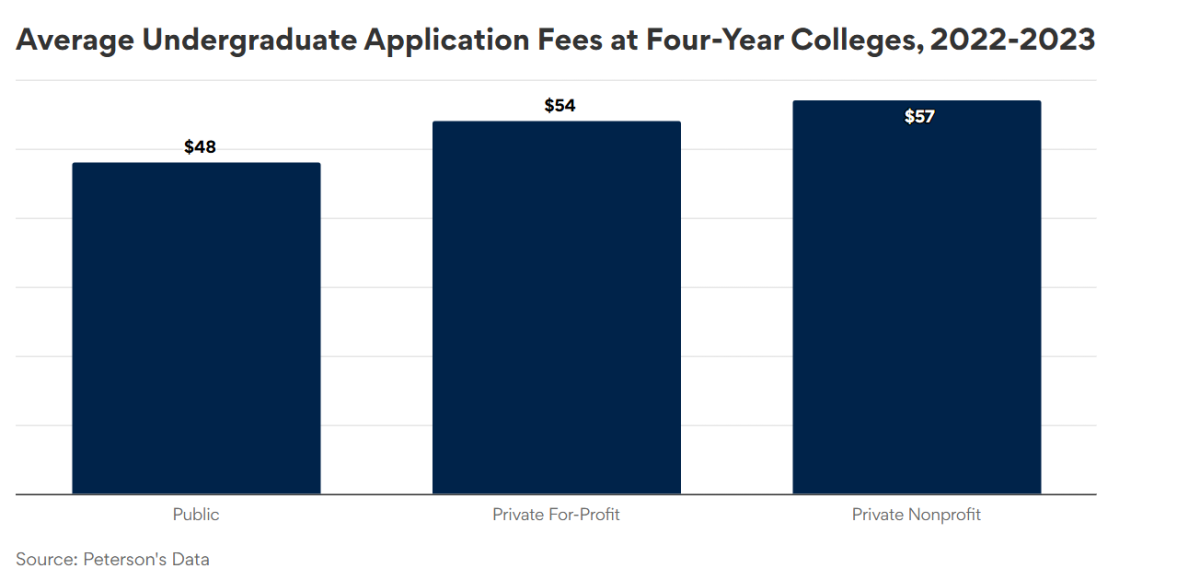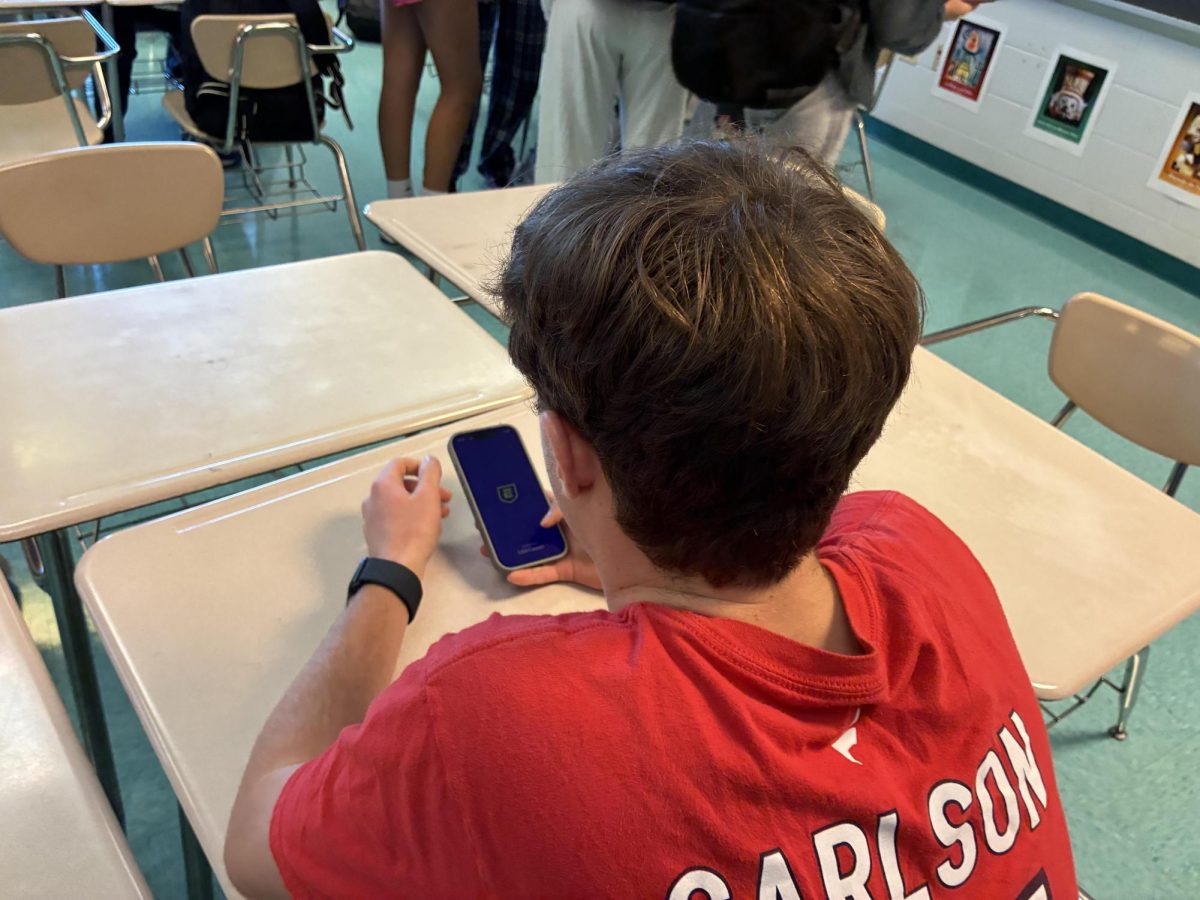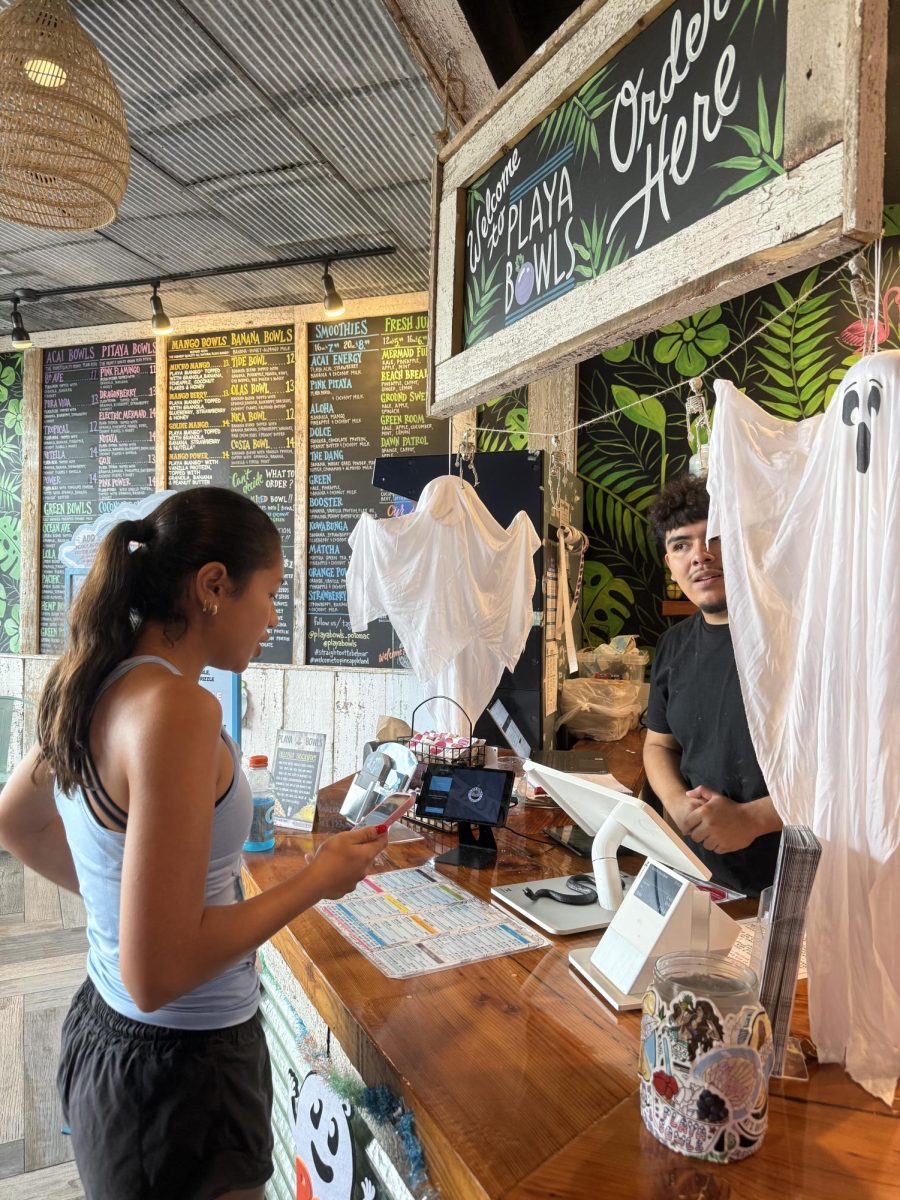Surveys seem to be found everywhere, from email inboxes to phone calls. School surveys, in particular, aim to gauge input from students, teachers and staff in order to better understand how to combat issues that are happening within schools, counties, states and even the country. However, the sheer number of surveys can raise questions as to how and why data is being collected.
Freshmen, sophomores and juniors took the annual Maryland School Survey on Apr. 3. According to the Maryland State Department of Education, “[The] survey collects important information about relationships, engagement, the school environment and safety,” which leaders can use to further improve various aspects of the school community.
In the case of the Maryland School Survey, students answer questions relating to their school. Questions ask students how they feel about their teachers, how well they fit in with their peers and the physical atmosphere of the school. Questions like these rarely change and can seem repetitive or irrelevant to students. Students often feel as though their views aren’t being heard. “Surveys are annoying. I feel like they don’t use the data for anything and it’s a waste of time,” sophomore Sara Denno said.
Students point out that surveys can provide insightful information. “Surveys are a one-stop shop for gaining data. You don’t think about it too much, they’re simple and not time-consuming. It’s easier to facilitate responses as opposed to asking students individually and you can get a lot of information based on them. Think of it as a funnel between administration and the student body,” sophomore Leanne Mpay said.
Although it can be hard for students to know if school survey results are being used properly, teachers at this school have found that implementing surveys within their own classrooms can be useful. Spanish and French teacher Margaret Foeckler has asked her students to fill out surveys this year regarding her teaching and the class environment itself.
Foeckler said that surveys in her class are more applicable to her and that they are helpful for learning more about student needs. “Definitely for me, [surveys] are more relevant for me if they’re in my class. I still have nine out of 19 people who have completed them, but the point is that if 15 do it, that’s a good chunk of information I can get,” Foeckler said.
More in-classroom surveys may be the answer for smaller group settings. Questions that may seem vague can help reflect the general trends of schools across the country and can allow leaders to understand how to improve schools.
Surveys are utilized in different ways in and out the classroom, but it is important to remember that they have potential to make a difference. “In this class, I’m trying to find out what you like, what’s going to help you learn. Some kids always have their phones out or are doing work for another class so how can I change that? That’s why I do [surveys]. I hope you guys get the impression that it makes a difference in class,” Foeckler said.








![Editors-in-Chief Ahmed Ibrahim, Helen Manolis, Cameron Cowen, Alex Grainger, Emory Scofield, Hayley Gottesman, Rebekah Buchman and Marley Hoffman create the first print magazine of the year during the October press days. “Only a quarter of the schools in MCPS have programs that are like ours, a thriving, robust program. That makes me really sad. This is not just good for [the student journalists] to be doing this, it’s good for the entire community. What [student journalists] provide to the community is a faith in journalism and that continues for their lifetimes," Starr said.](https://woottoncommonsense.com/wp-content/uploads/2025/10/wmpoFTZkCPiVA3YXA4tnGoSsZ4KmnKYBIfr18p3l-900x1200.jpg)
